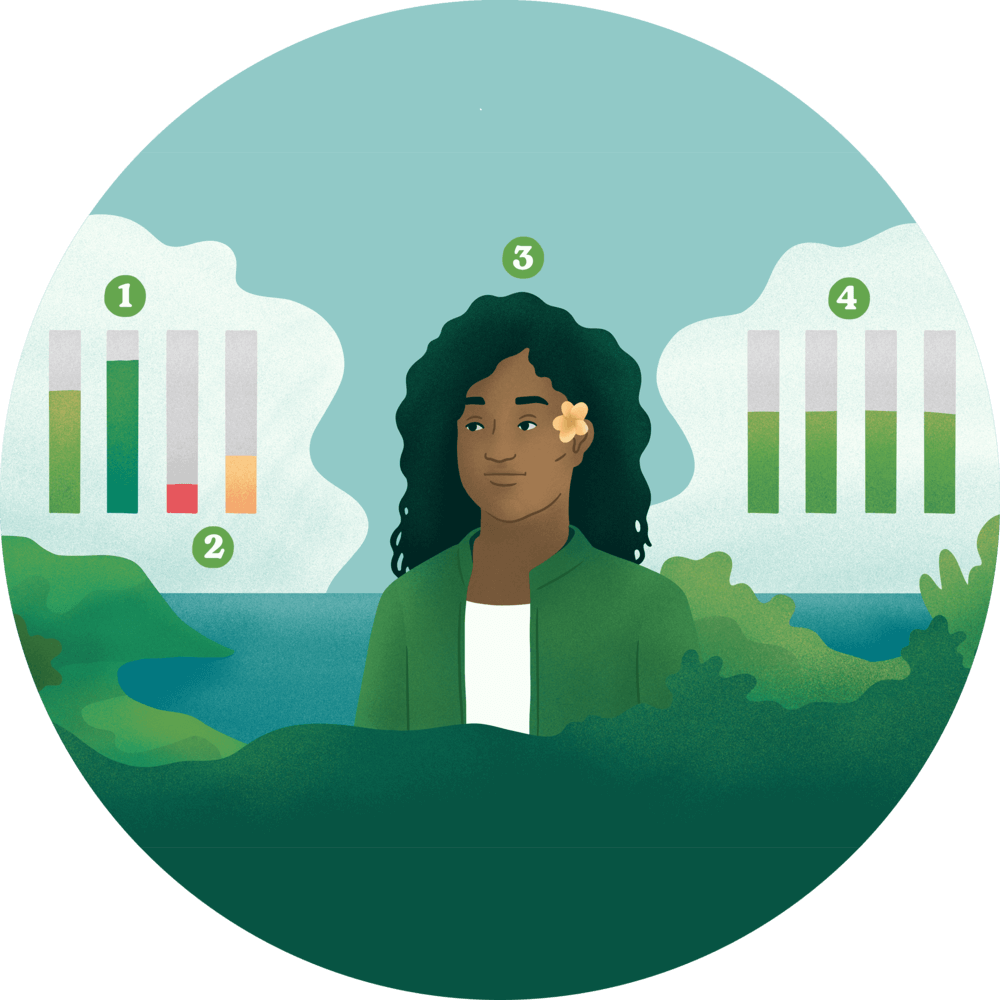
Balancing Mood
Mood Balancing is a tool that gives you insight into how what you’re doing affects your mood. It then recommends activities that can improve how you’re feeling.

What is Balancing Mood?
Even with a mood tracker or diary, it can be difficult to know exactly why your mood is going up and down each day. Balancing Mood is a tool that gives you insight into how what you're doing affects your mood. It then recommends activities that can improve how you’re feeling.
How does it help?
We know that having a range of activities in your life will support you to feel good. The key is to have the right mixture of pleasure, motivation, fitness, and connection.
You don’t need to cram all the right activities into a day or even a week, but it is helpful to be aware of those you need more or less of. This is exactly what the Balancing Mood tool does – it helps you see what types of activities appear to be being overdone or missing, so you’re aware of what you can do to improve your mood.

FAQs
What are mood swings?
These are changes in a person's feelings, rather than actually being about mood (e.g. from happy to grumpy minute-to-minute). Your mood is your overall level of emotional energy, which is long-lasting and doesn’t often respond quickly to things that happen unless the circumstance is very important to you.
Why does my mood change so fast?
Often people are experiencing fast changes in their emotions, rather than fast changes in their mood. Your mood is your overall level of emotional energy, which is long-lasting and doesn’t respond quickly to things that happen. For example, you might wake up in a bad mood (i.e low emotional energy) and it lasts until the afternoon. On the other hand, emotions like frustration or happiness come on quickly when something happens.
Emotions are related to your mood. For example, if you’re feeling low then you may get more easily frustrated with people talking to you.
Why are my moods so up and down?
The natural rhythm of your mood goes up and down, even if your life is going well and you’re being as healthy as you can. However, you can try to manage the amount that it goes up and down. Your mood can be influenced by what is happening to you right now, your past experiences, diet, sleep, exercise, hormones, and much more.
Potential ways to improve your mood can include: doing a balance of activities, getting out in nature, connecting with friends and whānau, listening to music, seeking help, getting good sleep, and exercising regularly amongst many other things. This is easier said than done, but it’s possible to work on all these things over time.

Try Balancing Mood now
Small Steps Toolbox
These tools have been developed to help with feelings of anxiety, stress, or low mood. Each tool only takes a few minutes. Health and wellbeing is an ongoing journey - so try them out and see what works for you.
Te Mātai Aronui
I tēnei tūmahi mātai aronui, ka arahina koe e tētahi oro māmā ki te āta rapu atu i ngā āhuatanga rerekē o ētahi whakaahua, ā, kia pērā anō tō titiro ki tō ao.
Te Whakahou i ngā Whakaaro
Mā tēnei tūmahi, hei tautohu ngā tauira hua-kore e whāia ana e ō whakaaro me ō whakapono, ā, ki te whakahoungia ērā āhuatanga, i roto i te wā, ka pai ake ai ō kare ā-roto, ka pai ai hoki ō whakatau hei hiki anō i tō hauora.
Te Mōhio ki ngā Tohu
I tēnei tūmahi, ka arahina koe ki te tautohu i ngā rongo o te tinana i te wā e pā kinohia ana tō ngākau. Mā ēnei tohu koe hei ārahi ki tētahi ara rerekē, arā, ki te mahi i tētahi o ngā tūmahi, ki te te tiaki rānei i a koe anō.
Te Āta Whakahā
He tikanga whakaataata tēnei, e āta whakahā ai te tangata, ki roto, ki waho anō kia tau te mauri, kia whakatā hoki te wairua. E arahina ana tēnei tūmahi e tētahi ata tāoreore e ngongo ana, e tuku ana hoki i te hau.
Te Whakarongo Pīkari
Mā tēnei pūkenga, ka āta arotahi koe ki ngā kupu a te tangata, kaua ki ētahi wāhi anake o āna kōrero. I tēnei tūmahi, ka whakangungua koe ki te whakarongo, ki te āta mōhio hoki i ngā wā e aro atu ana koe ki wāhi kē.
